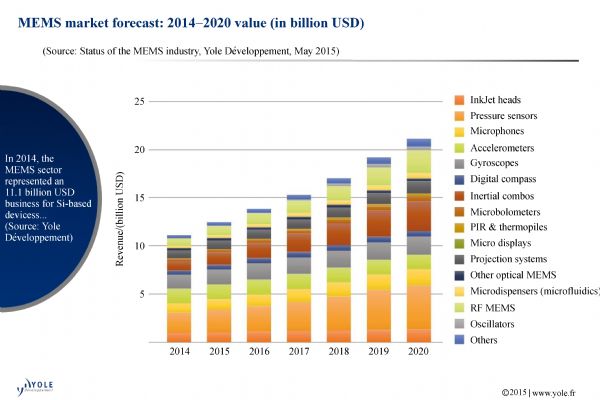1 Introduction
2 Micro energy storage systems
2.1 Working principle and application of micro-LIBs
2.2 Structural evolution of micro-LIBs from two-dimension to three-dimension
2.2.1 Development of the three-dimensional micro-LIBs

Fig.7 Different structures of 3D micro-LIBs. (a) 3D Al current collector. Reprinted with permission from Ref. [33], Copyright 2009, American Chemical Society. (b) 3D Si electrode. Reproduced with permission from Ref. [34], Copyright 2013, Wiley-VCH. (c) 3D solid state electrolyte based on Ref. [35]. (d) 3D Si-based architectures. Reproduced with permission from Ref. [36], Copyright 2007, Wiley-VCH |
2.2.2 Advantages of Si in three-dimensional micro-LIBs

Fig.8 (a) Theoretical capacity and relative potential vs. Li/Li+ of common electrodes in LIBs. Reprinted with permission from Ref. [44], Copyright 2009, Royal Society of Chemistry. (b) Scanning electron microscopy (SEM) image of the complex Si-based microchip structure; (c) wafer-scale LIB units can be potentially integrated with the micro/nano-intelligent electronic devices [45–47] |

Fig.9 (a) Schematic illustration of different Si anode morphology changes after lithiation process. Reprinted with permission from Ref. [48], Copyright 2007, Nature Publishing Group. (b) The two main methods used to solve the issue of large volume expansion in Si electrodes. Reprinted with permission from Refs. [48,49], Copyright 2007/2012, Nature Publishing Group; reprinted with permission from Refs. [50,52‒54], Copyright 2011/2012/2012/2011, American Chemical Society; reproduced with permission from Ref. [55], Copyright 2014, Wiley-VCH |
3 Fabrication of three-dimensional Si-based micro-LIBs
3.1 Three-dimensional micro-LIBs with Si as a supporting structure
3.1.1 Half-cell unit

Fig.10 (a) Scheme of 3D integrated all-solid-state micro-LIB. Reproduced with permission from Ref. [36], Copyright 2007, Wiley-VCH. (b)–(d) SEM images of different locations in 3D Si/TiN/poly-Si electrodes (AR 10 and 20); (e) the cycle performance of the 3D TiN/poly-Si stacks (AR 10 and 20) at a current density of 25 mA·cm−2 within a voltage window from 0–3 V vs. Li/Li+; (f)–(g) SEM images of the 3D Si/TiN/poly-Si electrode (AR 10) after 10 charge/discharge cycles. Reprinted with permission from Ref. [60], Copyright 2010, Royal Society of Chemistry |

Fig.11 SEM images of the (a) Si/photoresist microtubes and (b) Si/Pt/TiO2 microtubes after the etching mask removal, ALD of Pt and TiO2; (c)–(d) scanning transmission electron microscopy (STEM) image of a single Si/Pt/TiO2 microtube and the energy-dispersive X-ray spectroscopy (EDX) elemental mapping for Ti, Si, and Pt elements; (e) cyclic voltammetry (CV) measurement results of the 2D planar, micropillars, and microtubules electrodes decorated with the Pt/TiO2 layers; (f) gavalnostatic charge/discharge testing for the 2D (TiO2 layer, 60 nm) and 3D Si/Pt/TiO2 microtube electrodes (S1 samples: TiO2 layer, 60 nm). Reproduced with permission from Ref. [64], Copyright 2014, Wiley-VCH |

Fig.12 (a)–(b) SEM images of the fabricated Si double microtubes before and after the removal of photoresist mask using the deep reactive ion etching technique; (c)–(f) different magnification TEM images of Al2O3/Pt/TiO2/Li3PO4 stacking layers coated on the 3D double microtubes; (g)–(l) EDX-STEM elemental mapping of the Si-3D/Al2O3/Pt/TiO2/Li3PO4/SiO2-protective stacked layers; (m) high-resolution transmission electron microscopy (HRTEM) image of the Pt/TiO2/Li3PO4 layers; (n)–(o) the differential surface capacity versus potential plots and the rate performance of the Si-3D (simple microtube: SMT)/Al2O3/Pt/TiO2/Li3PO4 electrodes. Reproduced with permission from Ref. [65], Copyright 2016, Wiley-VCH |

Fig.13 (a) SEM image of the photoresist mold patterned on the Si wafer; (b) SEM image of the 3D Au current collector employing electroplating followed by the mold removal; (c) SEM image of the Tobacco mosaic virus (TMV) nanostructures self-assembled onto the 3D gold micropillars surface and then coated with Ni thin-film in an electroless plating solution, followed by ALD of V2O5 anode; (d) TEM image of an individual virus-templated nanorod; (e) SEM image of a single Si/Au-3D/TMV/Ni/V2O5 micropillar in a close-up top view; (f) CV measurement and (g) cycle performance of the virus-structured electrodes with and without 3D Au micropillars; (1)–(4) Scheme of the Si/Au-3D/TMV/Ni/V2O5 micropillar electrodes fabrication process. Reproduced with permission from Ref. [66], Copyright 2012, American Chemical Society |
3.1.2 Full-cell unit
3.2 Fabrication of 3D micro-LIBs with Si as the active material

Fig.17 Areal capacity vs. different 3D Si-based micro-LIB electrodes (black arrow: SEM images of the electrodes after Li-ion inserting/de-inserting process; bottom: SEM image of a 3D all-solid-state micro/nano-LIB arrays in the section view) [79–82]. Reproduced with permission from Ref. [83], Copyright 2016, American Chemical Society; Reproduced with permission from Ref. [84], Copyright 2015, Wiley-VCH |













